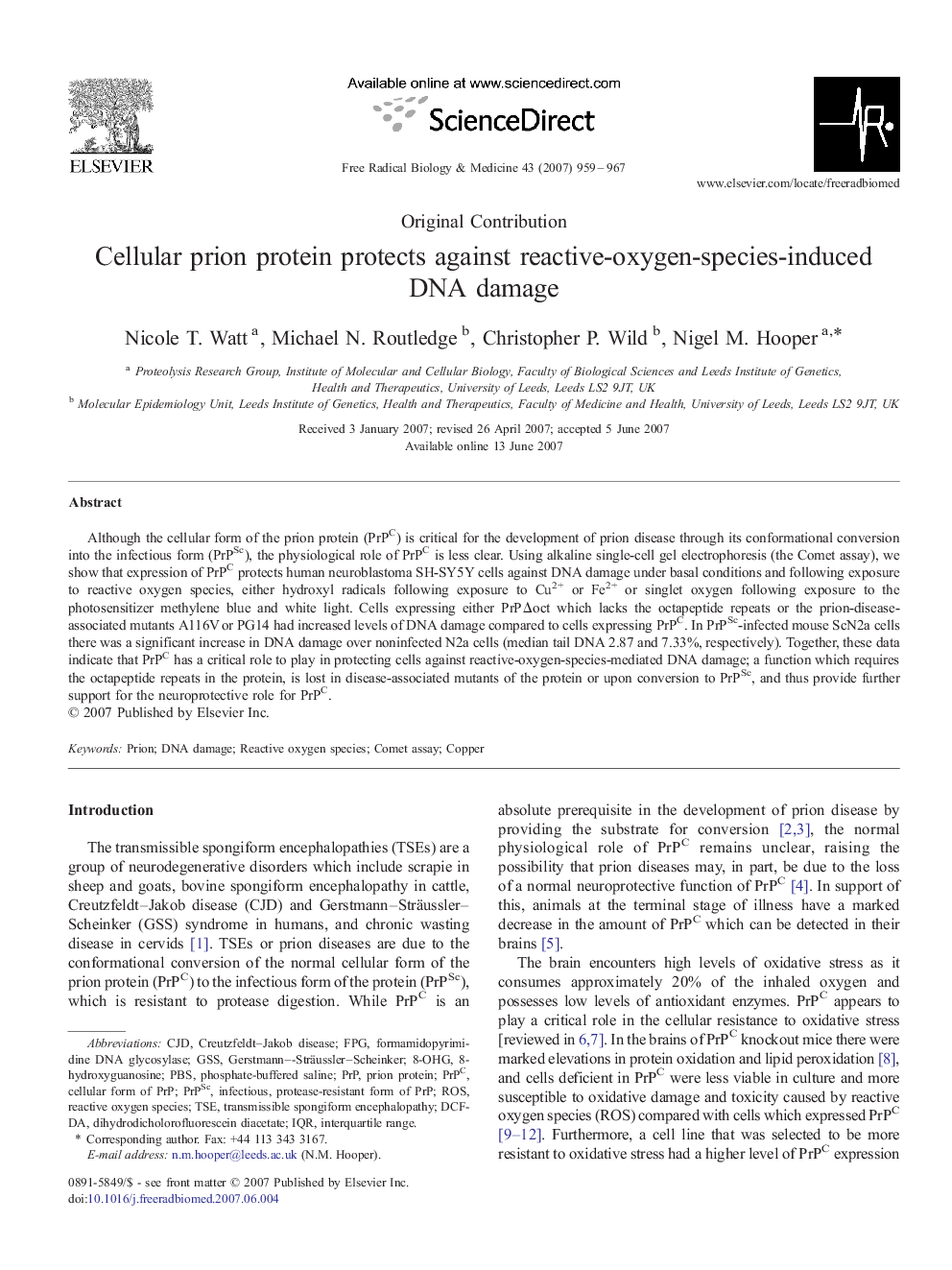| Article ID | Journal | Published Year | Pages | File Type |
|---|---|---|---|---|
| 1911354 | Free Radical Biology and Medicine | 2007 | 9 Pages |
Although the cellular form of the prion protein (PrPC) is critical for the development of prion disease through its conformational conversion into the infectious form (PrPSc), the physiological role of PrPC is less clear. Using alkaline single-cell gel electrophoresis (the Comet assay), we show that expression of PrPC protects human neuroblastoma SH-SY5Y cells against DNA damage under basal conditions and following exposure to reactive oxygen species, either hydroxyl radicals following exposure to Cu2+ or Fe2+ or singlet oxygen following exposure to the photosensitizer methylene blue and white light. Cells expressing either PrPΔoct which lacks the octapeptide repeats or the prion-disease-associated mutants A116V or PG14 had increased levels of DNA damage compared to cells expressing PrPC. In PrPSc-infected mouse ScN2a cells there was a significant increase in DNA damage over noninfected N2a cells (median tail DNA 2.87 and 7.33%, respectively). Together, these data indicate that PrPC has a critical role to play in protecting cells against reactive-oxygen-species-mediated DNA damage; a function which requires the octapeptide repeats in the protein, is lost in disease-associated mutants of the protein or upon conversion to PrPSc, and thus provide further support for the neuroprotective role for PrPC.
